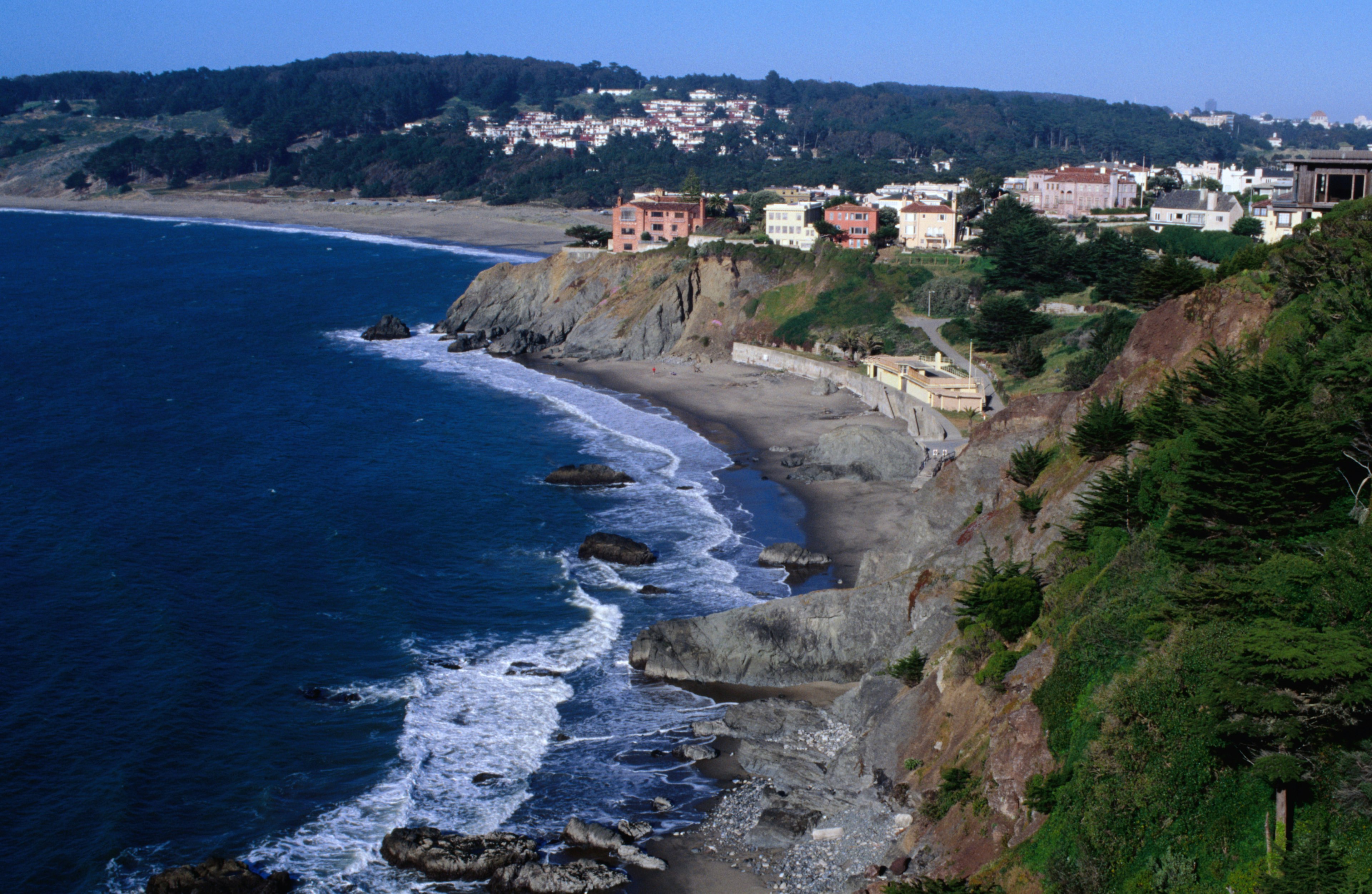San Francisco is known the world over for its beauty, its open-mindedness and iconic sites like the Golden Gate Bridge and Alcatraz, not to mention its charming cable cars. But there's so much more to this storied city than just its most recognizable features, incredible as they may be. And – let's be honest – San Francisco is a city known and loved just as much for its weirdness, quirk and distinct personality.
So it should be no surprise that the City by the Bay harbors many unlikely attractions in far-flung locations that locals cherish as much – or even more – than well-known spots like The Painted Ladies or Fisherman's Wharf. Below are a few choice secrets. Some are new, some old, all San Francisco originals.

The Wave Organ
Perched at the tip of a jetty in the San Francisco marina, the Wave Organ is a musical instrument played by San Francisco Bay itself. Finished in 1986, the instrument is constructed of 25 PVC organ pipes of various lengths that plunge into the water beneath the jetty. As the tide changes, so do the sounds that the Wave Organ makes. When the tide comes in it burbles like a baby, and on its way out it belches quite rudely. Often it makes spooky ghostly sounds, possibly with good reason: the jetty is made up of material taken from the demolished Laurel Hill Cemetery.
Bernal Heights Swing
The secret is likely out about the Bernal Heights Swing, a picturesque place to stimulate your vestibular system while taking in panoramas of the city that's inspired more than a few Instagram posts. That said, it's still an unbeatably lovely spot to watch Karl the Fog whorl through the San Francisco skyline, and the constant iterations and repairs that take place overnight are a testament to the way San Francisco is something of an urban art project more than most major cities.
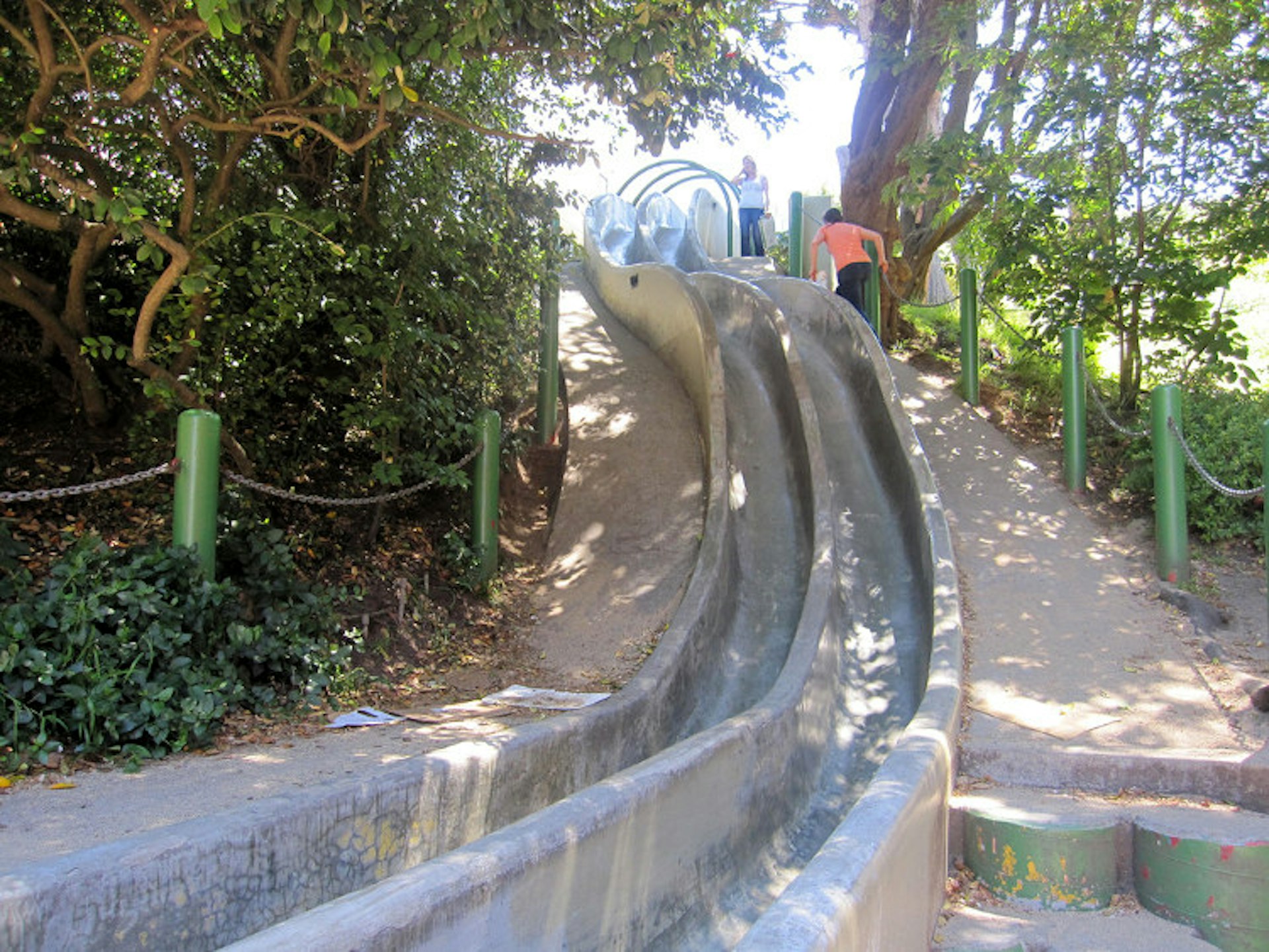
Seward Street Slides
San Francisco is full of famous hills, from the steep inclines that the Powell-Hyde cable car toils up and down each day to Telegraph Hill's gleaming Coit Tower the winding zig zags of Lombard Street. One of the lesser known, but most whimsical slopes worth checking out, however, is hiding high above the Castro in the Noe Valley hills.
The Seward Street Slides are twin chutes made of smooth cement hurtling down the hillside. If you think this looks like something a kid would dream up, you're right: the slides were designed in 1973 by 14-year-old Kim Clark, with the support of the great San Francisco sculptor Ruth Asawa and community activists.
The best way to ride the slides is to go down sitting on a piece of cardboard – you might find some at the foot of the slides, but bring your own just in case. Plunk down on your cardboard, and push off from the top. Pro tip: if you want to go really fast, throw a few handfuls of sand down the slide before you set off. Technically adults are supposed to be accompanied by children, but no one will begrudge you a joy ride if you're quick and quiet about it. The neighbors can be pretty cranky if you’re too loud, so keep this one hush-hush.
Camera Obscura
For centuries viewers have been thrilled by camerae obscurae – a deceptively simple technology that projects a broad view onto a surface in a dark room or box without the use of lenses, and which was later used as the basis for early photography. In the 1940s, one was built at San Francisco's Cliff House as part of the old Playland amusement park complex. Today you can still step inside to see 360 panoramas of the Bay projected onto a parabolic screen about the size of your body, and it's one of the most novel ways to take in San Francisco's stunning scenery.
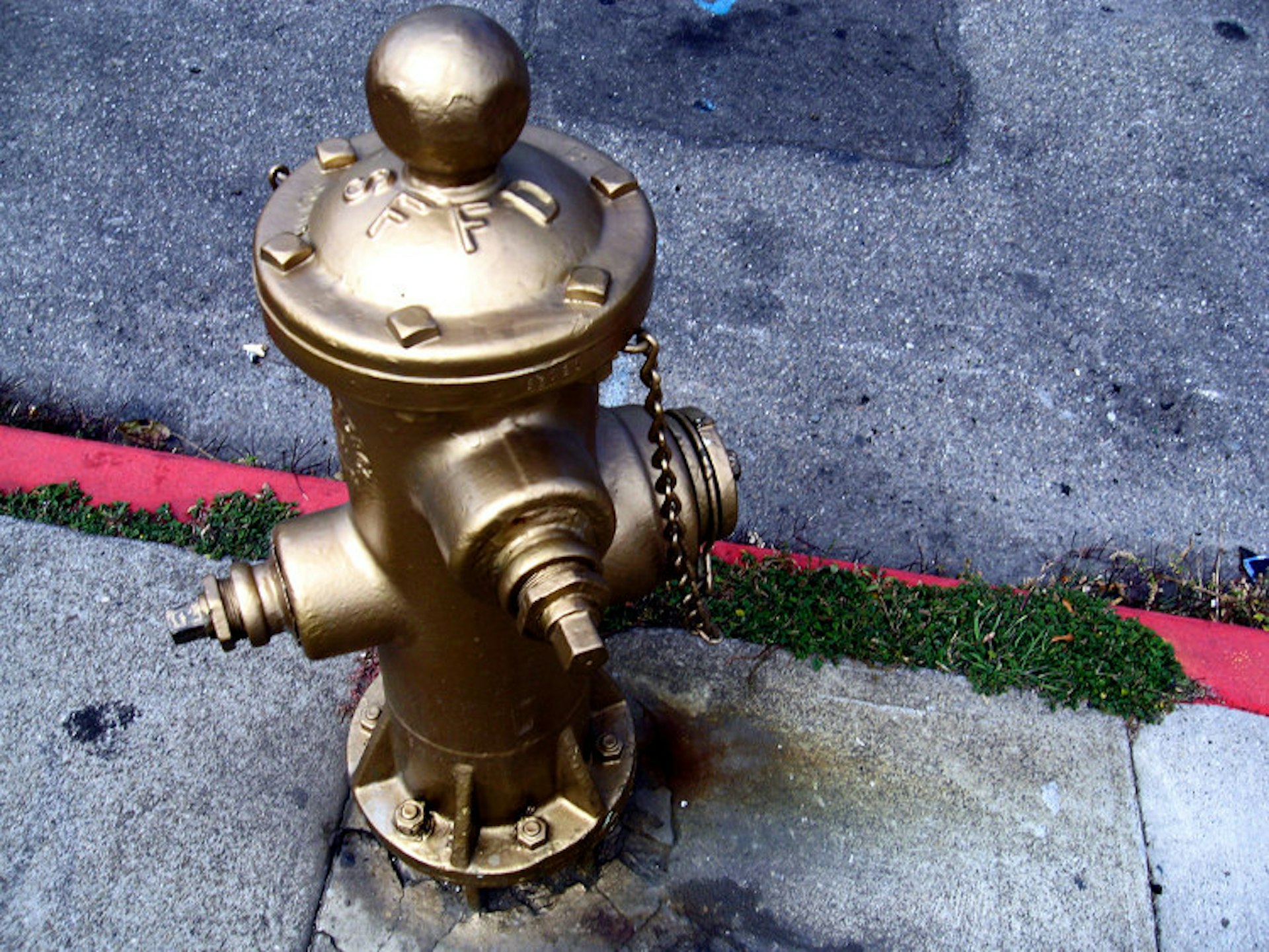
The Golden Fire Hydrant
In 1906 a terrible earthquake and fire left most of San Francisco in shambles, including Mission District. Legend has it that many fire hydrants were never hooked up to the water supply because corrupt politicians had siphoned off the funds destined for installation and maintenance. Luckily this little fireplug at the corner of 20th St and Church St worked, and single-handedly provided the water that stopped the fire from spreading south of 20th St.
As a symbol of fast thinking and good governance, the fire hydrant is given a new coat of gold paint each year on April 18, the anniversary of the earthquake. The Golden Fire Hydrant hugs the southwest corner of Dolores Park, which offers one of the most stirring panoramic views of San Francisco. The city that was a smoking heap in April 1906 was rebuilt at a rate of 15 buildings a day, and today it twinkles all the way to the Bay.
Cayuga Park
San Francisco is lush with green space – especially for a city that's famously just 7 x 7 square miles – including tiny Cayuga Park, a labor of love that exemplifies the old community spirit of San Francisco. Though it's a fraction of the size of more famous fields like Golden Gate Park, Cayuga remains a locals favorite tucked away under the BART line on the edge of the Outer Mission off Cayuga Avenue and Naglee. Cayuga Park consists of nearly 4 acres packed with winding paths and hand-carved wooden sculptures dreamed up by Demetrio Braceros, the longtime city employee who treated rough-and-tumble Cayuga Park as a labor of love.
Braceros spent two decades transforming Cayuga not just into a nubbin of green with a pair of tennis courts wedged between the tracks and the interstate but a real respite. In addition to his colorful sculptures, he created trails that have names like The Garden of Eden and The Walk of Hope. Braceros is so well-loved for his efforts in place-making that they inspired a documentary, as well as a partnership between Public Works and the San Francisco Arts Commission to restore many of Braceros' weathered carvings.
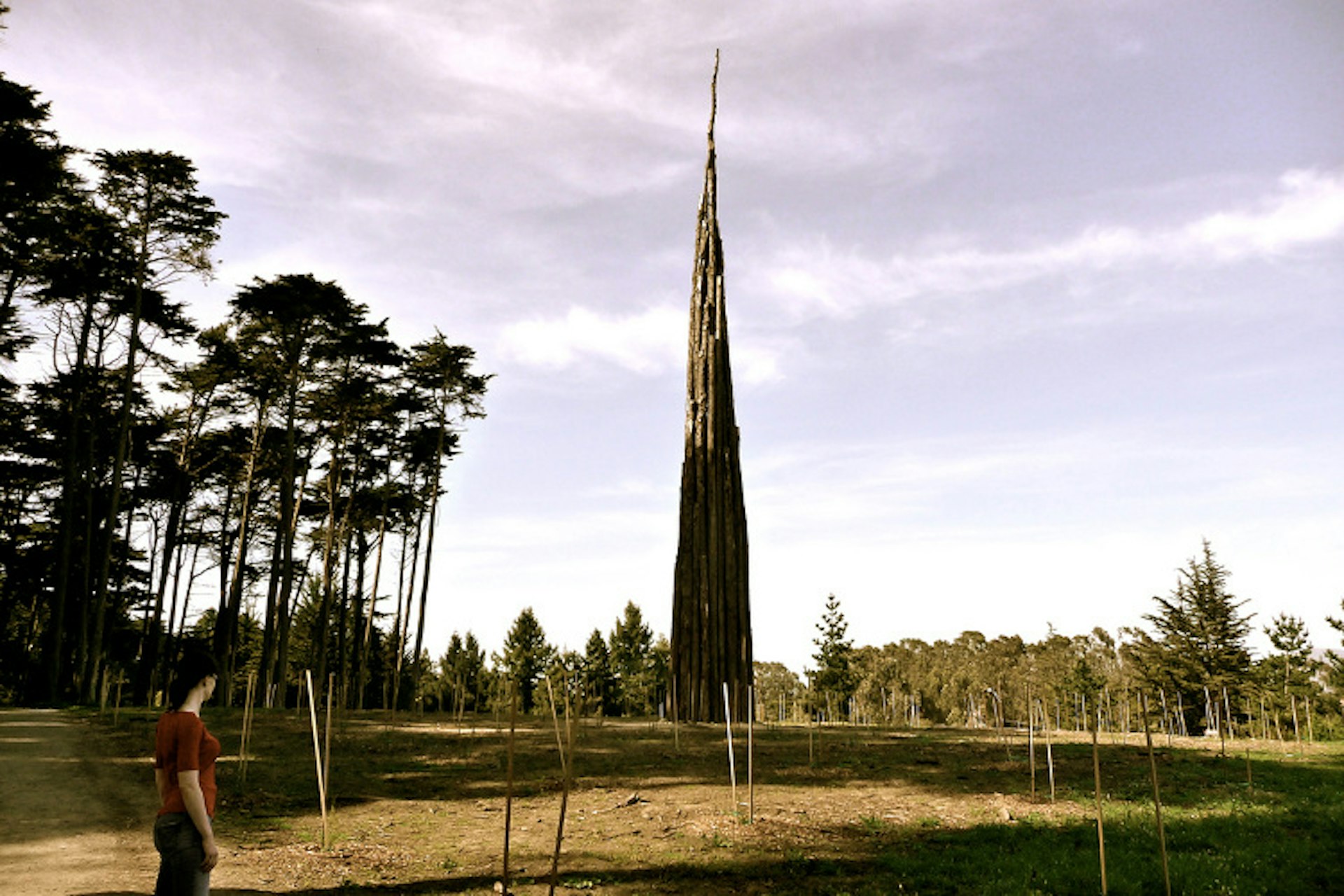
Andy Goldsworthy's Spire
Since the observation deck closed after 9/11, the TransAmerica Pyramid isn't San Francisco's top tower anymore. The favorite these days is the massive Spire built by artist Andy Goldsworthy in 2008 from 37 reclaimed Monterey cypress trees, rising 90 feet above a secluded Presidio hiking trail.
Somehow it manages to look like both a church steeple and a missile, which is strangely fitting for this location: the Spanish founded the Presidio in 1776 as a military outpost to protect missionaries staking their claim in California. The Presidio served as a US army base until its official retirement from service in 1994, when it became a sprawling park. On a clear day, you can see from Spire all the way downtown, where the concrete tip of the TransAmerica Pyramid peeks jealously on the horizon.
San Francisco History Center at SF Main Public Library
Affectionately referred to by some as 'San Francisco’s attic,' the sixth floor of the SF main public library is a treasure trove of books, photos, art, and other memorabilia from the city's illustrious past. There are original photos from the Gold Rush, posters from turn-of-the-century dog shows, old restaurant menus featuring once-trendy San Francisco foods like chop suey and crab Louie, and other gems pulled from the Center's 153 file drawers packed with San Francisco ephemera.
The Center has been collecting this stuff for 50 years and you never know what's going to surface next – early punk 'zines, handbills advertising 1950s jazz poetry readings, matchbooks to pioneering gay clubs. The collection is priceless, and entry is free – this might be exactly where you leave your heart in San Francisco.
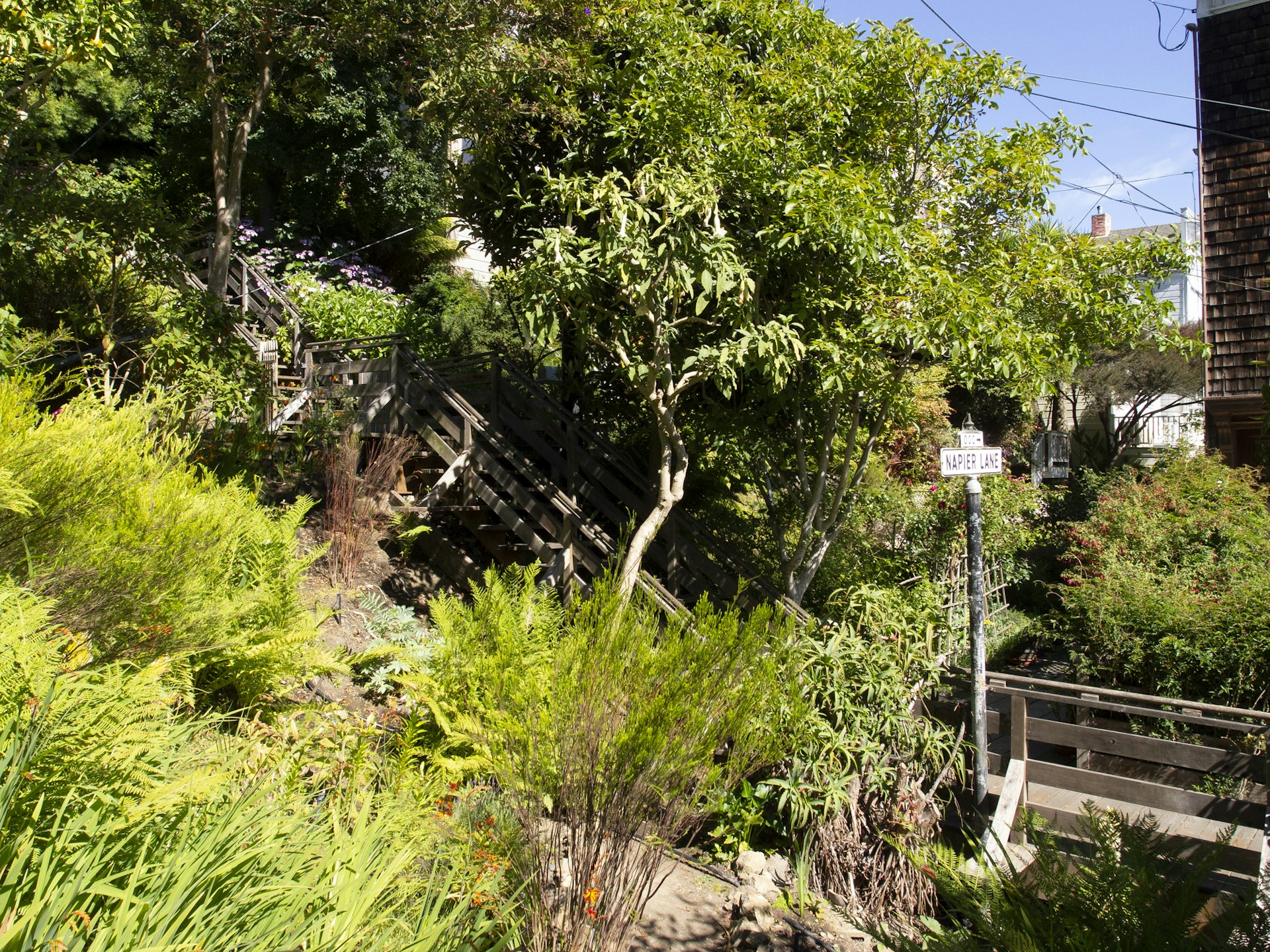
The Filbert Street Steps
No one knows exactly where the parrots on Telegraph Hill came from – at some point, at least two birds must have gotten out of somebody's window and a few generations later, the colorful escapees created a colony at least two hundred strong. However they came to be part of the San Francisco ecosystem, the Filbert Street Steps are one of the best places to go birding if you're hoping to catch a glimpse.
This secret wooden staircase that cuts between the top of Telegraph Hill and Coit Tower down towards the Embarcadero is like stepping into another world. Really, though, this lushly manicured wooden path traverses the Grace Marchant Garden, started by its namesake in the 1940s and officially protected by a local land trust in 1986. Today it's maintained by the neighbors whose daily commutes involve trundling up and down the Filbert Street Steps each day.
San Francisco Columbarium
As San Francisco grew and property in the western Richmond District reached a premium in the early 1900s, the city moved its western graveyards – headstones, caskets and all – south to the suburb of Colma. (That's how the Wave Organ ended up with Laurel Hill Cemetery old marble and granite, too). All the fuss made many San Franciscans start to look at cremation in a warmer light, and locals began to choose the stately neo-classical San Francisco Columbarium as a suitably glorious final resting place for their ashes.
Today the SF Columbarium is a beloved local landmark for its art nouveau stained glass windows and memorials to such local luminaries as Chet Helms (the music promoter who brought Janis Joplin to California in the 1960s) and San Francisco Supervisor Harvey Milk (America's first openly gay elected official – look for the rainbow flags under the dome). Flash photography is politely discouraged and hushed voices appreciated – this is still a final resting place, after all.
